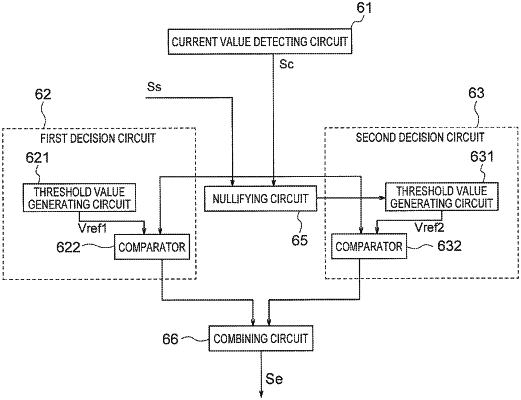| CPC H02P 29/027 (2013.01) [H02P 25/184 (2013.01); H02P 27/08 (2013.01); F25B 13/00 (2013.01)] | 8 Claims |

|
1. A motor driving apparatus comprising:
a connection switching means for selecting one of a plurality of connection states of a motor which is capable of operation in one of the plurality of connection states;
an inverter for supplying said motor with AC power, to cause said motor to operate;
a control device for causing said connection switching means to make selection of the connection state, and controlling said inverter; and
an over-current protection circuit for protecting said inverter; wherein
said over-current protection circuit comprises:
a plurality of decision circuits respectively provided for said plurality of connection states;
a combining circuit for combining results of comparisons in said plurality decision circuits; and
a nullifying circuit for nullifying part of the comparisons in said plurality of decision circuits, wherein
said over-current protection circuit detects an input current or an output current of said inverter, and causes said inverter to stop when the detected current becomes excessive;
said plurality of decision circuits perform comparisons of the detected current using, as the reference values, threshold values respectively corresponding to said plurality of connection states;
said nullifying circuit nullifies, when required, a comparison among the comparisons in said plurality of decision circuits using the threshold value other than the threshold value corresponding to the selected connection state, and causes, by the nullification, an output of said combining circuit to be identical to an output of the decision circuit corresponding to the selected connection state among said plurality of decision circuits.
|